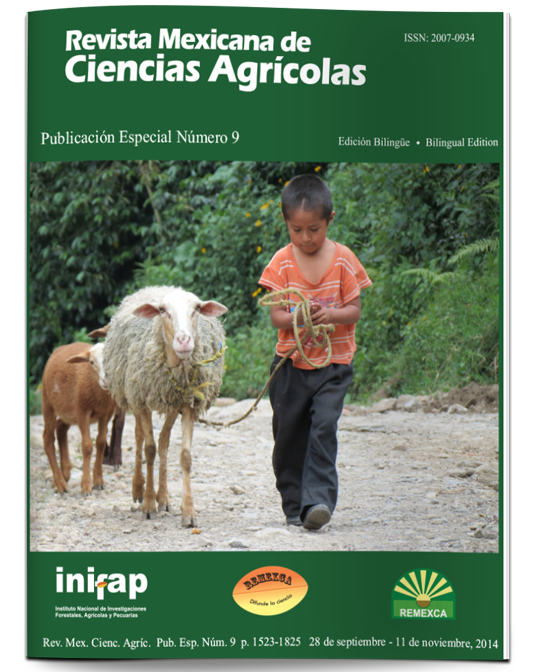Family economy and biodiversity index of species in the community backyards of Santa María Nepopualco, Puebla
DOI:
https://doi.org/10.29312/remexca.v0i9.1058Keywords:
backyard, diversity indexq, family economy, rural communityAbstract
The main function of the backyards in the community of Santa Maria Nepopualco, Puebla; is to provide food for their own consumption, strengthening the family economy by minimizing the expenditure to purchase food; management of these spaces also provides options for conservation of plant biodiversity in agro-ecosystems. The objective of this research was to analyse the financial support in the use of various species in the backyard and identify plant diversity. For this, an instrument to a total of 123 key informants from peasant households (UDC) was applied to the community. The results indicate that 100% of respondents have an average room size of 2 936 m2 near the house for cultivation of plant species. The CHAID analysis indicates that, the benefits generated in the backyard as the dependent variable is significantly associated with the given destination as saving and is mainly directed for the maintenance of the family. In the backyards, we observed a Shannon diversity index (H') of 3.4 bits, considered high; and a total of 130 plant species to which different uses are given. Several factors have influenced the backyard production and therefore in plant diversity. It is necessary to reassess the backyard system and consider the additional benefits that can be obtained.
Downloads
Downloads
Published
How to Cite
Issue
Section
License
The authors who publish in Revista Mexicana de Ciencias Agrícolas accept the following conditions:
In accordance with copyright laws, Revista Mexicana de Ciencias Agrícolas recognizes and respects the authors’ moral right and ownership of property rights which will be transferred to the journal for dissemination in open access. Invariably, all the authors have to sign a letter of transfer of property rights and of originality of the article to Instituto Nacional de Investigaciones Forestales, Agrícolas y Pecuarias (INIFAP) [National Institute of Forestry, Agricultural and Livestock Research]. The author(s) must pay a fee for the reception of articles before proceeding to editorial review.
All the texts published by Revista Mexicana de Ciencias Agrícolas —with no exception— are distributed under a Creative Commons License Attribution-NonCommercial 4.0 International (CC BY-NC 4.0), which allows third parties to use the publication as long as the work’s authorship and its first publication in this journal are mentioned.
The author(s) can enter into independent and additional contractual agreements for the nonexclusive distribution of the version of the article published in Revista Mexicana de Ciencias Agrícolas (for example include it into an institutional repository or publish it in a book) as long as it is clearly and explicitly indicated that the work was published for the first time in Revista Mexicana de Ciencias Agrícolas.
For all the above, the authors shall send the Letter-transfer of Property Rights for the first publication duly filled in and signed by the author(s). This form must be sent as a PDF file to: revista_atm@yahoo.com.mx; cienciasagricola@inifap.gob.mx; remexca2017@gmail.
This work is licensed under a Creative Commons Attribution-Noncommercial 4.0 International license.



